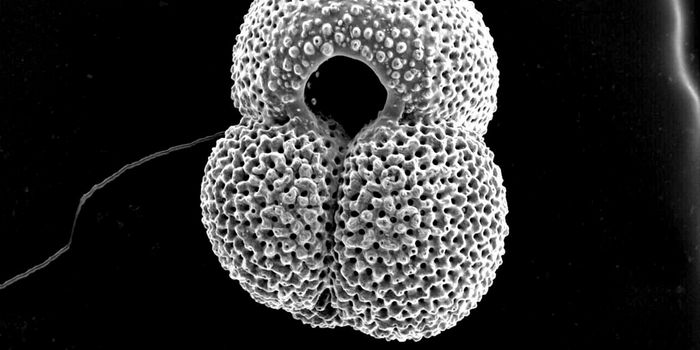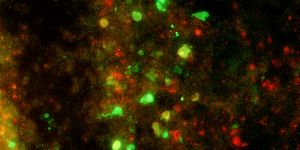Cancer
Brain Tumors May be New Victims of Ebola-like Virus
APR 20, 2015 9:43 AM PDT
Share
The Giant Rats that Save Lives
 This editorial by Nicolas Kristoff in the Sunday NY Times sheds light on animal intelligence--and human innovation.
This editorial by Nicolas Kristoff in the Sunday NY Times sheds light on animal intelligence--and human innovation.MALANJE, Angola - I'm walking in a minefield here in rural Angola, tailing a monster rat.
This is a Gambian pouched rat, a breed almost 3 feet from nose to tail, the kind of rat that gives cats nightmares. Yet this rat is a genius as well as a giant, for it has learned how to detect land mines by scent - and it's doing its best to save humans like me from blowing up.
These rodent mine detectors have been dubbed HeroRats, and when you're in a minefield with one that seems about right. You're very respectful, and you just hope this HeroRat doesn't have a stuffed nose.
I'm here because five years ago, my kids gave me a HeroRat for a Father's Day present through GlobalGiving.org. I didn't actually take physical possession (fortunately!) but the gift helped pay to train the rat to sniff out explosives. And now I've come to minefields of rural Angola to hunt for my rat.
There are 39 HeroRats here, and they underscore the way the aid world is increasingly embracing innovative approaches to old challenges.I've seen land-mine detection in Afghanistan and elsewhere, and it's dreadfully slow and inefficient. Typically, men in body armor walk in precise rows holding metal detectors in front of them. Whenever they come across metal, they stop and painstakingly brush away the soil until they see what it is.
Usually it's an empty AK-47 cartridge or a nail. Sometimes there is metal every few inches. Each time, the whole process stops until the soil can be brushed away.
In contrast, the rats scamper along on leashes. They respond only to the scent of explosives, so scrap metal doesn't slow them down.
At this minefield, which is full of metal objects, a human with a metal detector can clear only about 20 square meters a day. A rat can clear 20 times as much.
"Rats are also more reliable," said Alfredo Adamo, a field supervisor here. "With humans, concentration wanes after a while, but rats just sniff away."
The rats are paid in bananas, peanuts, avocados and apples, and they don't need body armor - partly because they're too light to set off land mines. (They can still weigh up to 2.5 pounds, which is a lot of rat when you're face to face.)
I think I found my rat: a scraggly codger named Boban who is just the right age to have been trained when my kids sponsored the rat. Boban was named after a Tanzanian soccer star, and the handlers said he was highly dependable.
Bart Weetjens, a Belgian product designer, started the HeroRat program after puzzling about how to improve mine detection. As a boy, Weetjens had kept rats as pets, and he came across an article about the use of gerbils for tasks involving scent detection.
Weetjens then consulted rodent scholars, who suggested Gambian pouched rats, in part because they compensate for very weak eyes with a superb sense of smell. They are called "pouched" not because they are marsupials but because they fill their cheeks with nuts and other goodies, and then bury them underground - relying upon scent to recover their caches later. Another advantage of Gambian pouched rats is that they have an eight-year life span that offers a lengthy return on the nine months of training needed to detect land mines.
I've seen land-mine detection in Afghanistan and elsewhere, and it's dreadfully slow and inefficient. Typically, men in body armor walk in precise rows holding metal detectors in front of them. Whenever they come across metal, they stop and painstakingly brush away the soil until they see what it is.
Usually it's an empty AK-47 cartridge or a nail. Sometimes there is metal every few inches. Each time, the whole process stops until the soil can be brushed away.
In contrast, the rats scamper along on leashes. They respond only to the scent of explosives, so scrap metal doesn't slow them down.
At this minefield, which is full of metal objects, a human with a metal detector can clear only about 20 square meters a day. A rat can clear 20 times as much.
"Rats are also more reliable," said Alfredo Adamo, a field supervisor here. "With humans, concentration wanes after a while, but rats just sniff away."
The rats are paid in bananas, peanuts, avocados and apples, and they don't need body armor - partly because they're too light to set off land mines. (They can still weigh up to 2.5 pounds, which is a lot of rat when you're face to face.)
I think I found my rat: a scraggly codger named Boban who is just the right age to have been trained when my kids sponsored the rat. Boban was named after a Tanzanian soccer star, and the handlers said he was highly dependable.
Bart Weetjens, a Belgian product designer, started the HeroRat program after puzzling about how to improve mine detection. As a boy, Weetjens had kept rats as pets, and he came across an article about the use of gerbils for tasks involving scent detection.
Weetjens then consulted rodent scholars, who suggested Gambian pouched rats, in part because they compensate for very weak eyes with a superb sense of smell. They are called "pouched" not because they are marsupials but because they fill their cheeks with nuts and other goodies, and then bury them underground - relying upon scent to recover their caches later. Another advantage of Gambian pouched rats is that they have an eight-year life span that offers a lengthy return on the nine months of training needed to detect land mines.
A huge challenge with tuberculosis is diagnosis. It takes a trained health worker with a microscope all day to examine about 25 samples of sputum to determine if they are positive for tuberculosis.
In contrast, a HeroRat can screen 100 samples in 20 minutes - ambling along a row of petri dishes, sniffing at each, and pausing when one is positive for tuberculosis. The rats are also much more accurate than a human with a microscope. In the clinics where HeroRats are now doing the detection (their diagnoses confirmed by humans in labs), the number of tuberculosis patients identified has risen 48 percent - meaning that more patients are diagnosed and treated, preventing the disease's spread.
Continue reading the main story
RECENT COMMENTS
jag 21 hours ago
The hero-rats are a powerful antidote to the menacing inhumane rats that littered many parts of the world with these menacing instruments of...
Karen Dawn 21 hours ago
As an animal rights activist I approached this article with a little trepidation. Given the utter horrors we visit upon rats, often for no...
Colenso 21 hours ago
Bart Weetjens began his career in product design, after obtaining first class honours in his degree in product design. Product design is a...
SEE ALL COMMENTS
Apopo pampers the rats, which get better health care than most Angolans. The rats work only a couple of hours a day (they get hot in midday), and they retire at age 6 when they become less dependable.
"We debated what to do with them after retirement," Adamo recalls. "It would be very unfair to just, er," - he paused slightly, embarrassed, looking for a euphemism - "get rid of them."
So the HeroRats spend their golden years nibbling on avocados and hanging out with their handlers. When the time comes, the handlers lay them to rest in a rodent cemetery, with several people present to pay respects.
Adamo admires the rats because he has seen the damage that land mines can do. He grew up in Mozambique in a village separated from its farming fields by a mine belt, and his grandfather lost his leg to a land mine. Three neighbor boys were killed and a fourth badly injured by a mine.
To me, HeroRats are an example of an explosion of innovation taking place in the philanthropic world - and seeing large gains in productivity as a result. We see this with cellphone apps in poor countries for savings and health, with microsaving and microinsurance, with impact investing and, yes, with animals.
Apopo is also an example of aid groups connecting donations to particular tasks in a way that donors can easily relate to. Through Apopo.org, you can "adopt" a HeroRat for $84 a year. Take it from me, this makes a terrific Mother's Day or Father's Day present!
The handlers grow attached to the rats and recognize each of them by face. Francisco Pedro, a 38-year-old Angolan who has worked in demining for many years, initially with a metal detector and the last three years with HeroRats, says that his affection for the rats has led to marital challenges.
"When there are rats in the house, I just shoo them away," he said. "I can't kill rats now."
"But my wife can," he added, explaining that he pleads with his wife to let the rats be. He paused for a moment, looking wounded, and said: "When I'm not at home, she kills them."
(Source: nytimes.com)
You May Also Like
Loading Comments...








